Wellness Promotion
Competency Model
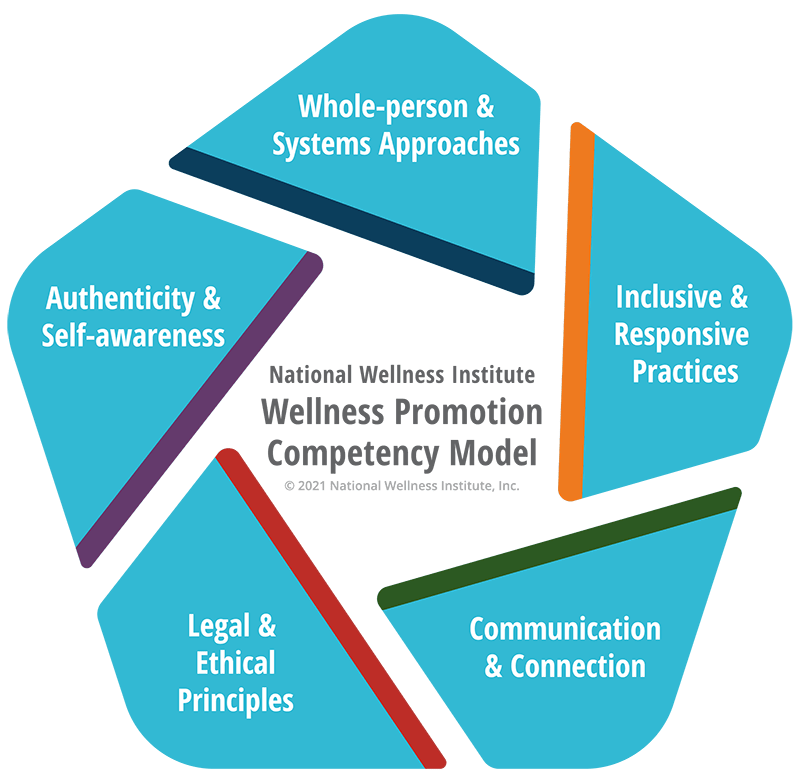
The National Wellness Institute (NWI) Wellness Promotion Competency Model* is a groundbreaking standard for wellness practitioners. The model strengthens wellness professionals’ knowledge, skills, and abilities by providing a framework that drives multidimensional, multicultural high-level wellness. The model also serves as the standard for the Certified Wellness Practitioner (CWP) certification program.
In April 2020, NWI collaborated with Butler University and a research team to conduct a study** clarifying and supporting the validity of the five-domain competency model. A revised Wellness Promotion Competency Model comprised of 27 total competencies was published in 2021.
The five domains include:
- Authenticity and Self-awareness
- Whole-person and Systems Approaches
- Inclusive and Responsive Practices
- Communication and Connection
- Legal and Ethical Principles
New research, advances in technology, and unforeseeable national and global events demand for competencies to be continually reexamined as the needs of both professionals and those whom they serve change. The CWCE revised the Certified Wellness Practitioner application process, policies, and procedures in 2021 to align with these current competencies.
* The Council on Wellness Certification Excellence (CWCE) released the original NWI Wellness Promotion Competency Model in spring 2017.
**Peterson, C., Ellery, J., Laube, T., Yuhas, B., & Hunt, S. (2022). Validation of the wellness promotion competency model: An exploratory factor analysis. International Journal of Community Well-being. https://doi.org/10.1007/s42413-021-00153-3
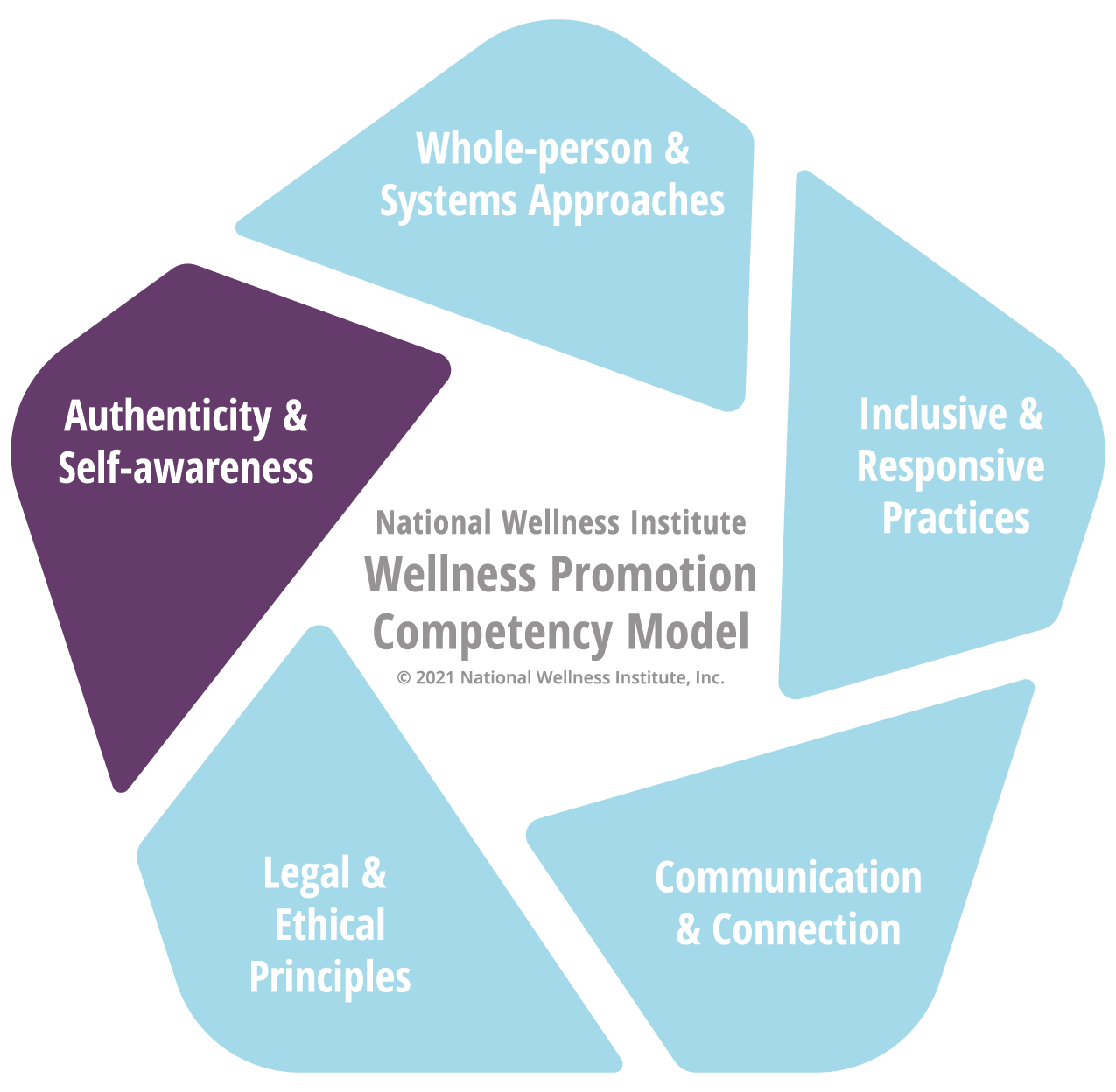
Authenticity and Self-Awareness
- Engage in ongoing reflection to expand personal growth and professional development
in multiple dimensions of wellness - Demonstrate commitment to wellness promotion by modeling healthy lifestyle practices
in multiple dimensions of wellness - Establish authentic and autonomy-supportive relationships
- Recognize your own limitations in wellness promotion and refer individuals to other
professionals when appropriate to support their wellness goals
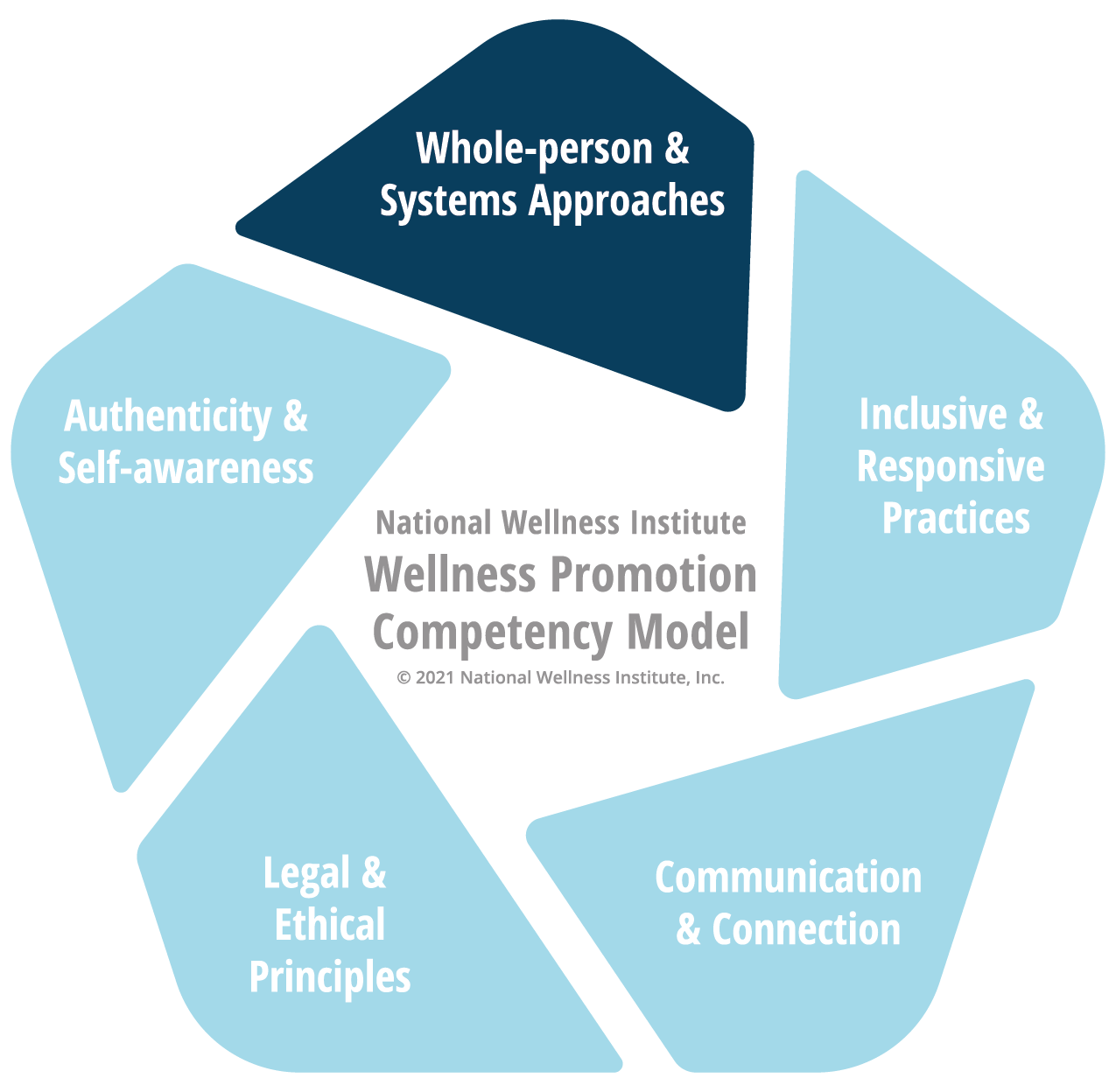
Whole-person and Systems Approaches
Use an ecological approach (e.g., interactions among the individual, family, organization, community, and social systems) to understand the ways dynamic systems impact an individual’s experience of wellness
Assess individual and/or group characteristics, interests, and needs using a multi-dimensional
and ecological approachIdentify health and wellness resources and materials that allow for an individual’s self-discovery, self-knowledge, and self-direction
Apply relevant theories and models to explain the integrated role of physical, social, intellectual, emotional, occupational, and spiritual aspects in the human pursuit and experience of wellness throughout the lifespan
Adopt person-centered communication practices that consider the whole person, recognizing
the influence factors such as socio-demographic variables and worldview have on the communication processProvide developmentally appropriate and culturally relevant evidence-based information
to educate individuals and the public about wellnessUse participatory, humanistic, and strengths-based processes to design opportunities that will
lead toward achieving established objectives and outcomesUse appropriate techniques (e.g., strengths-based, humanistic, cognitive-behavioral) to encourage individuals to be active participants in their personal wellness journeys
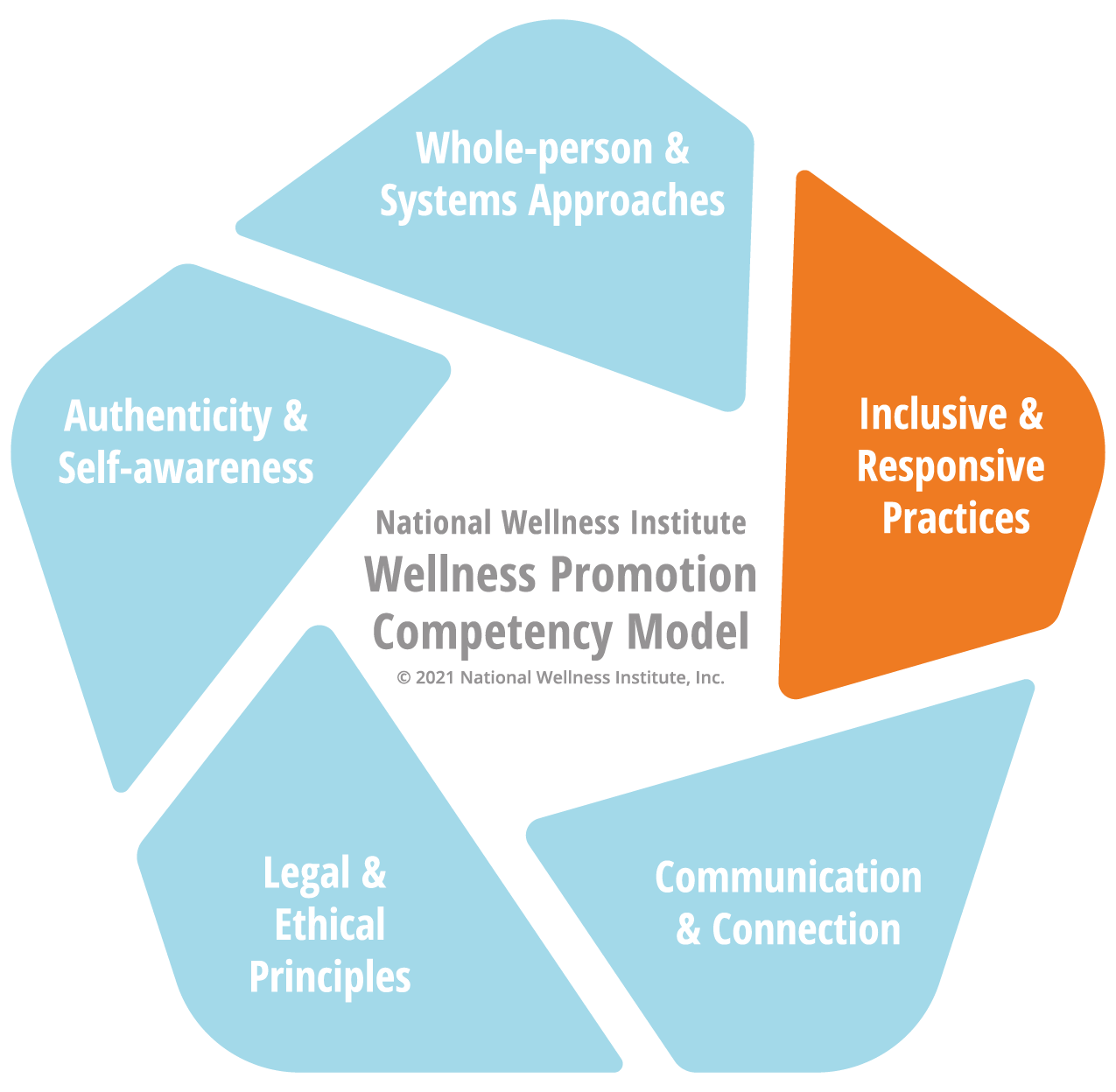
Inclusive and Responsive Practices
- Practice self-awareness and self-regulation to minimize the effects of personal biases in working with diverse individuals and groups
- Practice multicultural competence, recognizing the dynamics of oppression and privilege on an individual’s lived experiences
- Demonstrate compassion, integrity, and respect for diverse individuals and groups, including but not limited to diversity in sex, age, culture, race, ethnicity, disabilities, body-size, sexual orientation, socioeconomic status, and gender identity
- Work to uncover individuals’ strengths, concerns, and values using a person-centered approach to inquiry that includes active listening to help set appropriate wellness goals and strategies
- Assist individuals in identifying barriers or resistance to change that are interrupting their ability to integrate wellness-promoting behaviors into their lives
- Adapt wellness strategies to fit individual, geographical and cultural needs, acknowledging that there are no universally correct models or processes
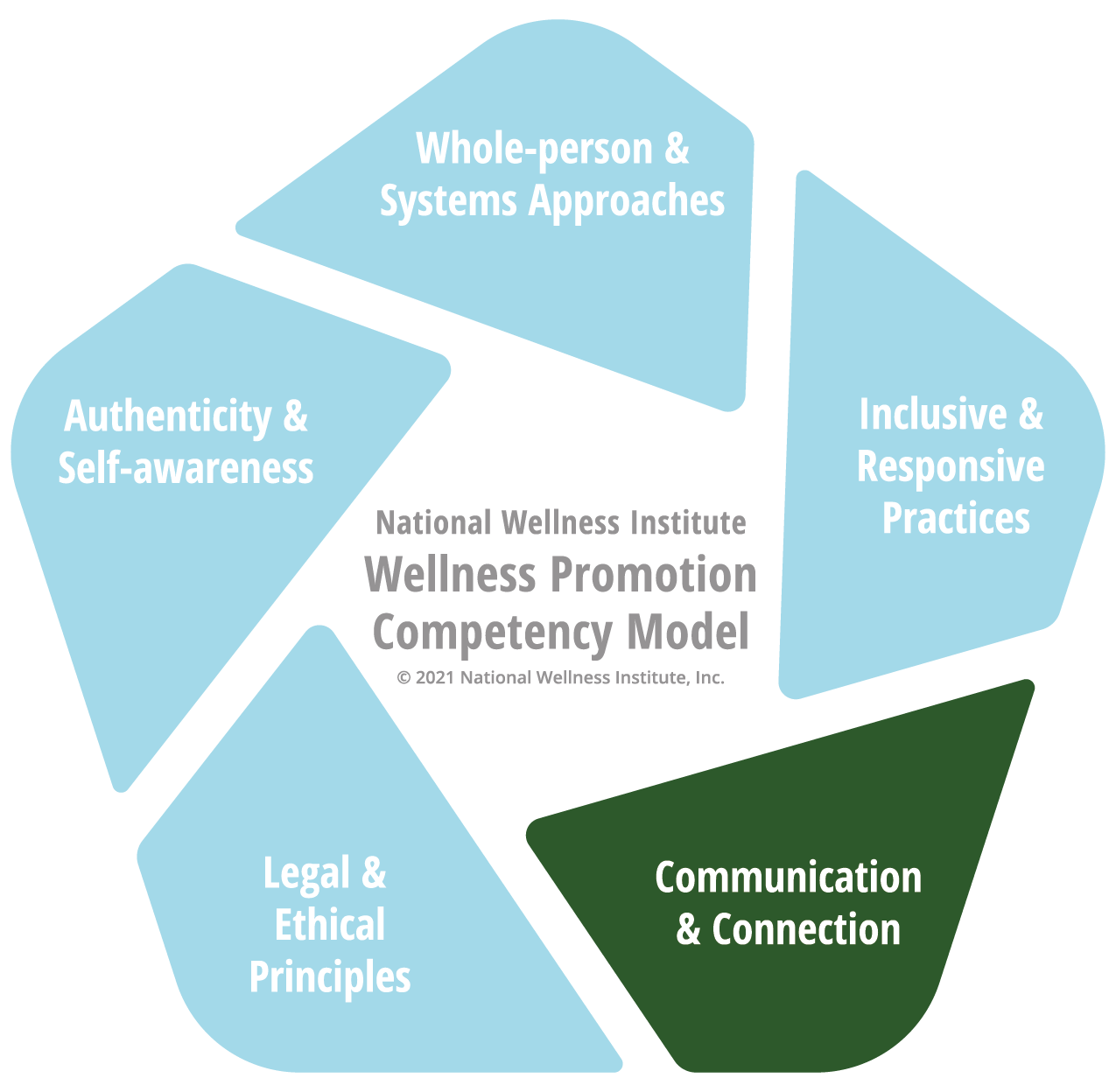
Communication and Connection
- Recognize the influence of organizational development, leadership, and culture
on individual wellness - Articulate to key stakeholders the value of wellness for individuals and how it supports the organization’s or community’s mission, purpose, and strategic goals
- Establish collaborative relationships and interdisciplinary teams to promote sustainable wellness practices that meet long-term individual, organizational, and/or community goals
- Use meaningful and inclusive communication methods and technologies to support, manage, and promote wellness initiatives
- Use quantitative and qualitative feedback to continually evaluate the quality and effectiveness of initiatives
- Use quantitative and qualitative data to communicate key findings to stakeholders
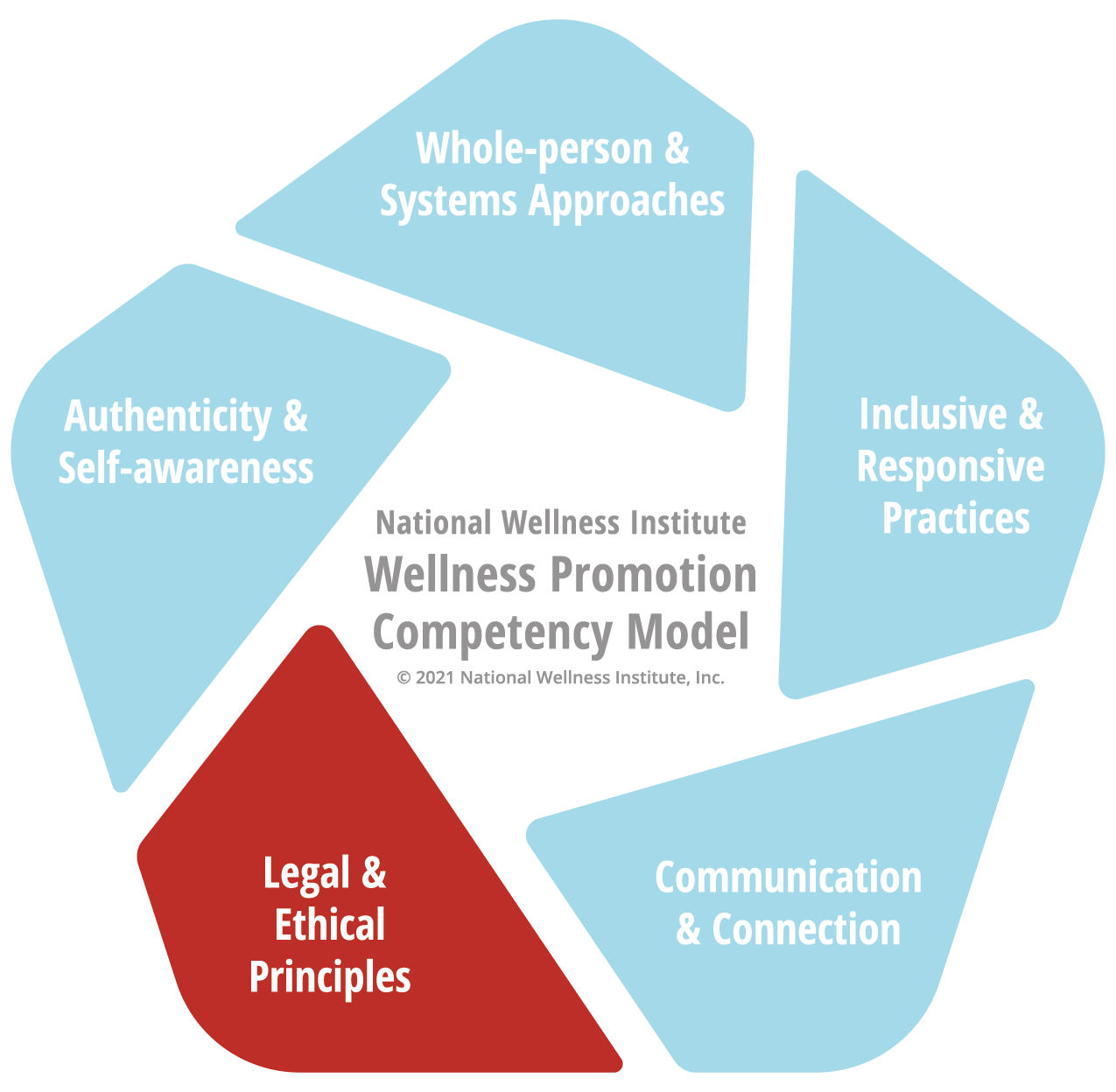
Legal and Ethical Principles
- Comply with legal standards for confidentiality, compliance, and mandated reporting
- Work within your scope of practice and in accordance with your profession-specific
code of conduct - Maintain ethical relationships

